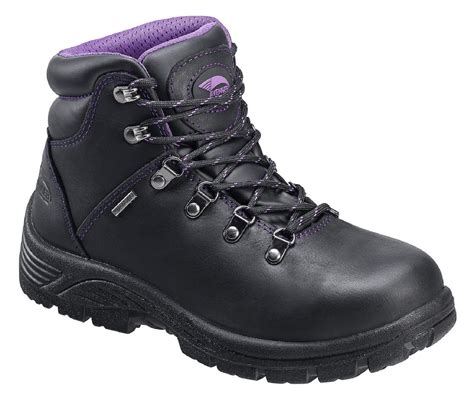5 Safety Shoes Tips

When it comes to safety shoes, the importance of choosing the right pair cannot be overstated. Not only can they protect your feet from hazards such as sharp objects, hot surfaces, and electrical shocks, but they can also provide arch support, reduce the risk of slips and falls, and even alleviate chronic foot pain. Here are 5 safety shoes tips to help you make an informed decision:
1. Understand Your Work Environment
The first step in selecting the right safety shoes is to understand the specific hazards present in your work environment. For instance, if you work in an area where there’s a risk of electrical shock, you’ll need shoes with insulating properties. If your workplace involves dealing with heavy objects or machinery, shoes with a steel toe cap are essential to prevent toe injuries. Consider factors such as the type of floor, the presence of chemicals, and the weight of objects you might need to lift.
2. Know the Safety Standards
Different industries have different safety standards for footwear. For example, in the United States, safety shoes often need to comply with standards set by ASTM International (formerly known as American Society for Testing and Materials) or the Occupational Safety and Health Administration (OSHA). Understanding these standards can help you choose shoes that are not only comfortable but also compliant with regulatory requirements. Look for shoes labeled as meeting specific standards, such as “ASTM F2413” for protective footwear.
3. Consider Comfort and Fit
While protection is paramount, comfort and fit are equally important. Ill-fitting shoes can cause discomfort, lead to blisters, and even contribute to accidents due to distracted discomfort. When trying on safety shoes, ensure you’re wearing the same type of socks you plan to wear with them on the job. Also, try them on later in the day, as feet tend to swell throughout the day. The shoes should fit snugly, with enough room to wiggle your toes but not so loose that they cause blisters.
4. Maintenance and Replacement
Safety shoes, like any other piece of protective equipment, have a lifespan. Regularly inspect your shoes for signs of wear and tear, such as cracks in the soles, holes in the upper material, or significant degradation of the midsole. Most safety shoes have a recommended lifespan (often between 6 months to 2 years, depending on usage) after which they should be replaced, regardless of their appearance. Proper maintenance, such as cleaning and storing them appropriately, can extend their useful life.
5. Budget Accordingly
While it might be tempting to go for the cheapest option, remember that safety shoes are an investment in your health and safety. Higher-quality shoes may cost more upfront but can provide better protection, last longer, and even offer features like superior arch support and breathability, reducing the likelihood of foot-related issues. Set a budget that balances cost with the level of protection and comfort you need. Remember, the cost of replacing a pair of safety shoes is significantly less than the potential cost of medical treatment for a foot injury.
Additional Tips:
- Try Before You Buy: If possible, try on several models to find the one that fits best and feels most comfortable.
- Seasonal Considerations: Consider seasonal factors. For example, in colder climates, insulated safety shoes can keep your feet warm, while in warmer conditions, breathable shoes can help prevent overheating.
- Personal Health: If you have any pre-existing foot conditions, consult with a healthcare professional for recommendations on safety shoes that can accommodate your needs.
Conclusion:
Choosing the right safety shoes is a critical decision that can significantly impact your safety, health, and job performance. By understanding your work environment, knowing the safety standards, prioritizing comfort and fit, maintaining and replacing your shoes as needed, and budgeting accordingly, you can ensure you’re well-protected and comfortable on the job. Remember, your feet are your foundation; investing in the right safety shoes is an investment in your overall well-being.
What are the key factors to consider when selecting safety shoes?
+The key factors include understanding your work environment, knowing the relevant safety standards, considering comfort and fit, planning for maintenance and replacement, and budgeting appropriately.
How often should safety shoes be replaced?
+Safety shoes should be replaced based on their condition and the manufacturer’s recommended lifespan, which can range from 6 months to 2 years, depending on usage.
Are there different types of safety shoes for different industries?
+Yes, different industries have different safety shoe requirements. For example, construction, manufacturing, and healthcare each have unique hazards that require specific types of safety shoes.
Can safety shoes help prevent common foot problems?
+Yes, safety shoes can help prevent common foot problems such as plantar fasciitis, bunions, and toe injuries by providing adequate support, protection, and comfort.
How can I ensure my safety shoes fit properly?
+To ensure a proper fit, try on safety shoes later in the day, wear the same type of socks you plan to wear with them, and choose shoes that fit snugly with enough room to wiggle your toes.



